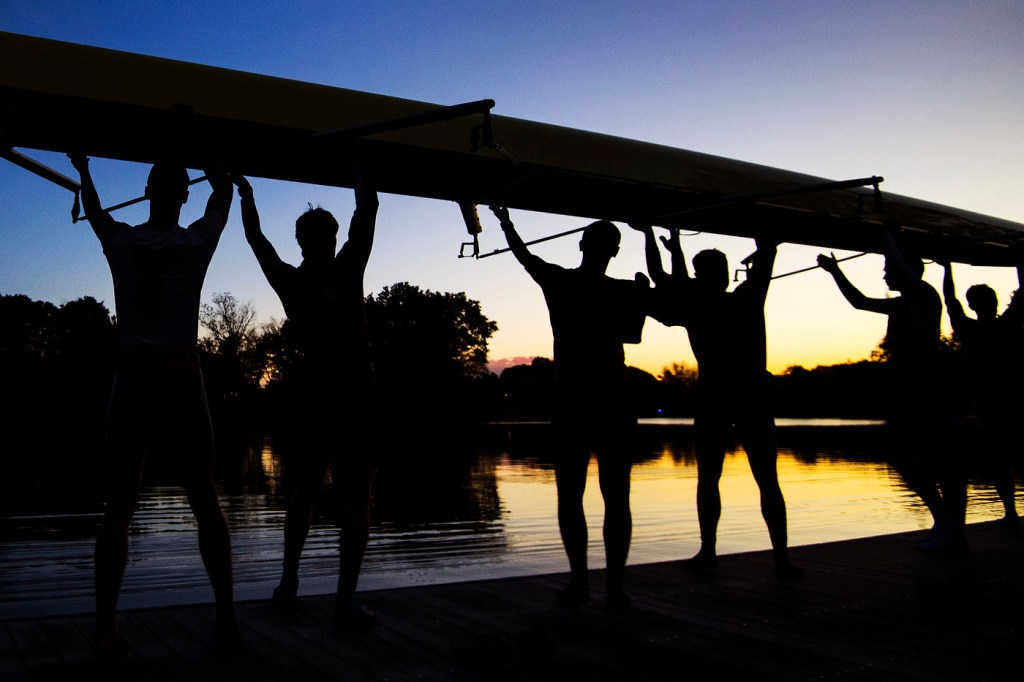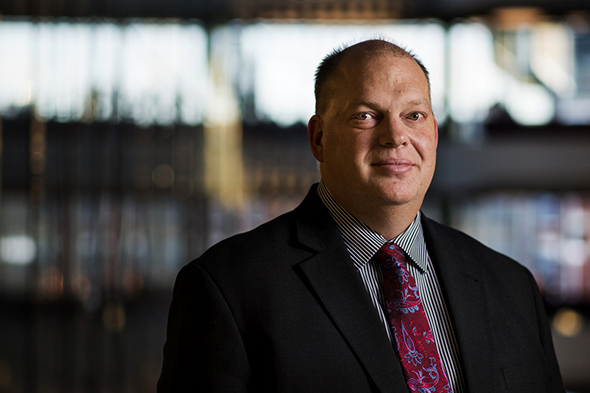COVID-19 forced Northeastern to suspend sports in the fall. That doesn’t mean the games are over.

Northeastern has suspended its fall sports programs with the goal of rescheduling them in spring 2021, says Jeff Konya, the Huskies’ athletic director.
All of Northeastern’s athletic scholarships for the entire 2020-21 academic year will be honored, says Konya. The NCAA eligibility of students will not be affected if their teams are able to compete in the spring.
Northeastern traditionally fields NCAA Division 1 teams in the fall sports of men’s and women’s soccer, rowing, and cross country, as well as in women’s volleyball and field hockey. Those teams may conduct workouts during the fall season according to guidelines set by the university, public health officials, and the NCAA.

Jeff Konya is Huskies’ athletic director. Photo by Adam Glanzman/Northeastern University
Northeastern’s announcement followed similar fall postponements by the Atlantic 10 and America East conferences. Mark Emmert, president of the NCAA, has signaled that intercollegiate sports will be postponed or canceled nationally for the fall unless the surge in U.S. coronavirus cases is reversed.
Northeastern’s conference, the Colonial Athletic Association, has yet to postpone or cancel its competitions in the fall; the CAA has left those decisions to its 10 member schools—spread across eight states—based on local circumstances and public-health guidance.
Konya says Northeastern had been hoping to salvage a fall season of competition against regional schools in order to minimize travel and mitigate the spread of the coronavirus. But that plan became untenable based on the escalating number of COVID-19 cases across the U.S.
“We want to make sure we’re taking care of the health and safety of our student-athletes,” Konya says. “We are very, very hopeful that we can conduct spring competition in those fall sports.”
The first day of classes for Northeastern student-athletes is Sept. 9. Why make this decision now?
The fall teams traditionally report in the early part of August. In fact, some of our earliest contests in field hockey, volleyball, and soccer occur before the general student population at Northeastern comes back to campus. So we were within a couple of weeks of bringing the student-athletes back in preparation for a traditional fall season.
We have a wonderful team at Northeastern that is looking at the health and safety protocols, testing, and all of these considerations. And while we were being very proactive in trying to accommodate a safe space for our student-athletes to travel and compete, at the end of the day I think we’re making the correct call to push the fall season to the spring.
No one has played Division 1 sports since March, when the pandemic cost the Northeastern women’s hockey team a chance at the national championship. As a former college football player, what are you feeling for all of these athletes who cannot know what to expect?
It’s tough. I felt very, very sad when the spring sports were canceled and the tournaments for those teams were called off.
I think this is a little bit easier to wrap people’s minds around, because this is a postponement. It’s not a cancellation. We’re flip-flopping the fall competitive season into the spring—and it’s going to cause a lot of activity on the Northeastern campus in the spring, which could be really interesting when we have all of our team sports running at the same time. It’s going to be a bustle of activity.
Will there be enough space in the spring for all of the teams?
We’re going to make it work. We’re going to have to be very creative with how we schedule, and people will have to have requisite patience. I think that collaboratively we’ll get to the right place and be able to pull it off.
What are the plans for winter, and in particular your high-visibility sports of hockey and basketball?
At this point, our hockey, basketball, swimming, and indoor track and field teams are set to have their traditional winter schedules, which means they will start their competitions toward the latter part of fall.
It is going to be really interesting to monitor what happens in the professional ranks, as the NHL, NBA, Major League Baseball, and Major League Soccer start competing again. There’s going to be an opportunity to learn from those circumstances and implement that for our winter sports, so that they have the best chance of going off on time.
Are you envisioning a likelihood that your hockey and basketball teams will compete with no fans in the stands?
That’s the current environment in the professional leagues that are coming back right now. There is also talk of restricted attendance, which could mean perhaps 15 to 20 to 25 percent attendance at NFL games in the fall. All of this is going to evolve as we get a better handle on COVID-19.
But right now I think we’re going to be playing without fans until we feel comfortable that we can provide a safe and healthy place for those patrons.
Do you believe the pandemic is going to permanently change the world of spectator sports?
Even when a vaccine is introduced, I don’t think that it’s going to be like ripping off a Band-Aid and that we’re going to go back to what we perceived to be normal before the pandemic. I think there is going to be a slow tapering back, and how that interplays with sports environments and consuming content remains to be seen.
At Northeastern, we’ve been very intentional about providing the platforms to follow us live or via broadcast or social media. Our relationship with NESN provides us with broadcasts of a minimum of 75 live events per year; NESN showed more than 100 of our events last year. They have been wonderful partners, I think they are very pleased with the content that they’re receiving from us, and we’re looking to continue to add and elevate that relationship.
For media inquiries, please contact media@northeastern.edu.






